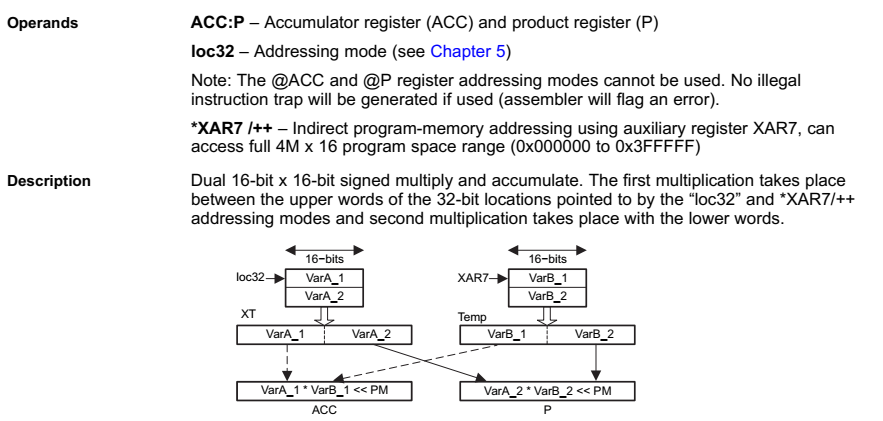Tool/software: TI C/C++ Compiler
Dear TI,
My name is Phu Nguyen, i writing code for chip TMS320F28020 by assembly language. I have a problem when i read DMAC instruction (page 187 at TMS320C28x CPU and Instruction Set).
As this picture, i understand that VarA_1 = XT[31:16], VarA_2 = XT[15:0], VarB_1 = Prog[XAR7], but i can't know value of VarB_2 = ? (1)
Can you explain for me this question (1)?
Thank you and best regards,
Phu Nguyen


